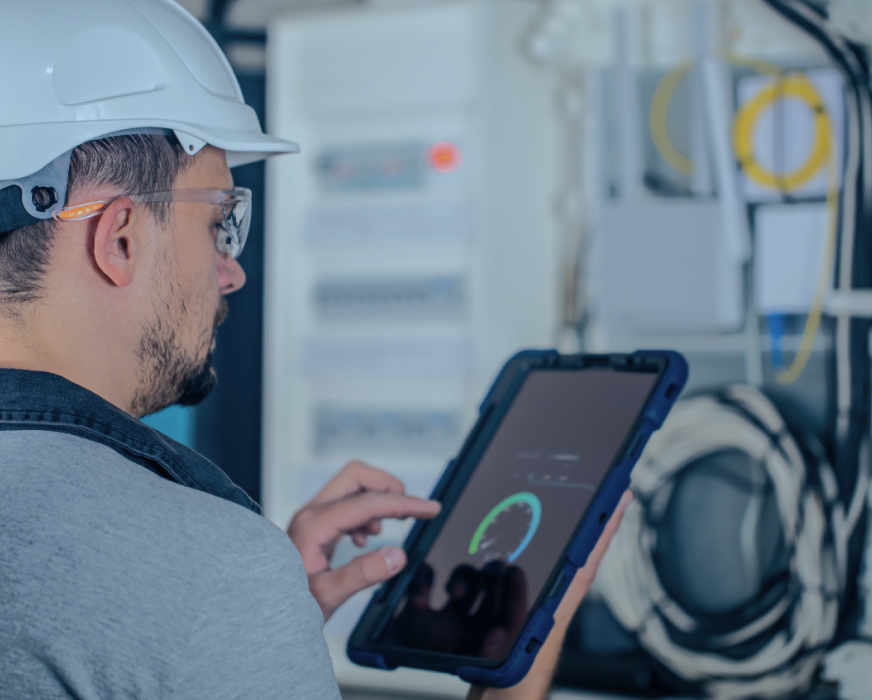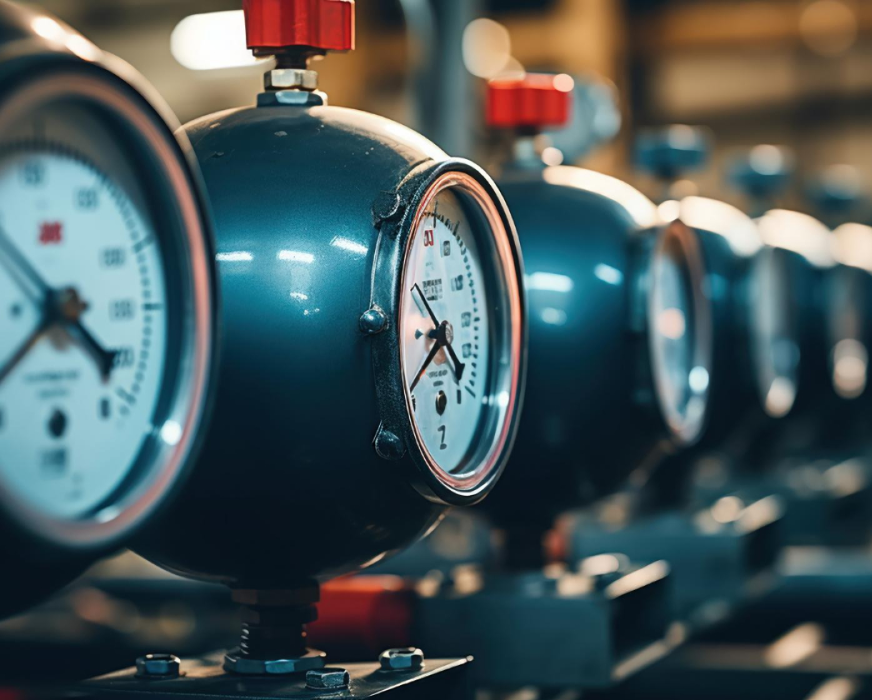SKU:RAD-0002-ZR
Oxygen Deficiency Depletion Safety Alarm
Couldn't load pickup availability
The Oxygen Deficiency Depletion Safety Alarm is a 0-23% room oxygen monitor designed to protect staff from oxygen depletion. This device is designed to be mounted near nitrogen, argon, helium or other inert gas sources. It can also be used in walk-in refrigerators or freezers with temperatures as low as -50°C.
Our Oxygen Deficiency Safety Alarm is used in laboratories, pharmaceuticals, cryogenics, process cooling, freezers, manufacturing and research facilities.
Features
- Provides 24/7 protection for you and your staff against oxygen deficiency
- 90db audible and visual alarm on the sensor and remote display (90db)
- 3 user-configurable alarms meet all OSHA codes
- The remote display can be mounted up to 300 feet away
- Long-life zirconium oxide sensor, lasts up to 10+ years!
*A surge protector is required for safeguard and longevity of the monitor*
Add-On Options
- RAD-0022-ZR: Display Add On. Designed to provide additional read-outs to be connected for additional alarm points. (up to 3 read-outs per device).
- CM-1027: Dual Strobe Add On Kit. Plug flashing strobes into both the sensor and remote display to give a more visual alarm. Used in high-noise environments or where required by an inspector.
- CM-1029: Industrial Strobe Siren. The Industrial Gas Strobe Sirenis designed to provide an additional flashing indicator of a potential gas leak in indoor areas that are using/storing compressed gases.
- CM-1026-6: 24 VDC Strobe Tower Add-On Kit - same features as CM-1026-5 for 24 VDC hard-wired systems
- Certificate of Calibration - Available on request in comments at purchase. For factory recalibration order part no. CAL-0001 here.
- SV-1029 - Solenoid Shut-Off Safety Valve
Specifications
-
Measurement Range: 0-23% display
- Display Resolution: 0.1%
- Accuracy: Better than 2% FS
- Pressure Dependence: Not pressure dependent
- Response Time: O2: <2min by 90%
-
O2 Deficiency Alarms (default): AL1 19.5%, AL2 16.5%, and AL3 12%.
- Sound Alarm: 90db @ 10cm
- Alarm Response Time: < 60 seconds
- Warm-Up Time: 600 seconds (10 min) for full operating temperature range
- Operating Temperature: -58°F to 122°F (-50°C to 50°C)
- Sensor Life Expectancy: 10+ years
- Weight: 1.5lbs (Monitor only)
-
Dimensions:
- SEU: 6.5 x 5.0 x 2.5 in.
-
RDU: 5.5 x 3.5 x 1.75 in.
Electrical
- Power Supply: Output: 12VDC, 2000mA.
- Power Input: 100~240 VAC, 50/60Hz, 0.6A (25 ft. Ethernet cable - included)
- Power Consumption: 3 Watts
- 6 VDC battery backup connections
- Relays: Peak Current < 2A @ 30 VDC or 250 VAC, SPDT
- 4-20mA output
A surge protector is required for safeguard and longevity of the monitor
Warranty
- 1 year on the device - See CO2Meter Terms + Conditions
Documents
 How to Hard Reset the RAD-0002-ZR (pdf)
How to Hard Reset the RAD-0002-ZR (pdf)
 Hard Wiring Your Oxygen Deficiency Safety Alarm (pdf)
Hard Wiring Your Oxygen Deficiency Safety Alarm (pdf)
 Connecting Multiple Monitors to Solenoid Valve (pdf)
Connecting Multiple Monitors to Solenoid Valve (pdf)
 Connecting Multiple Monitors to Strobe Tower (pdf)
Connecting Multiple Monitors to Strobe Tower (pdf)
 Connecting Monitors to CM-1026-5 Tower (pdf)
Connecting Monitors to CM-1026-5 Tower (pdf)
 Connecting Monitors to CM-1026-6 Tower (pdf)
Connecting Monitors to CM-1026-6 Tower (pdf)
 Exhaust Fan Relay Wiring Diagram (pdf)
Exhaust Fan Relay Wiring Diagram (pdf)
 SV-1029, SV-1030 Wiring Diagram (pdf)
SV-1029, SV-1030 Wiring Diagram (pdf)
 RAD-0002-ZR Testing Procedures
RAD-0002-ZR Testing Procedures
 RAD-0002-ZR Playlist: Unboxing, Installation, and Calibration
RAD-0002-ZR Playlist: Unboxing, Installation, and Calibration
Accessories
- RAD-0022-ZR: Remote Display Add-On. This device is designed to provide additional read-outs to be connected for additional alarm points. (up to 3 read-outs per device).
- CM-1027: Dual Strobe Add On Kit. Attach a flashing strobe to both the sensor and remote display to give a more visual alarm. Used in high-noise environments or where required by an inspector.
- CM-1029: Industrial Strobe Siren. The Industrial Gas Strobe Siren is designed to provide an additional flashing indicator of a potential gas leak in indoor areas that are using/storing compressed gases.
- Certificate of Calibration - Available on request in comments at purchase. For factory recalibration order part no. CAL-0001 here.
-
Data Sheets
-
Manuals
-
Technical Documents
-
Videos
-
Additional Resources
-
Case Studies




Looking for Installation Services?

Looking for Certification Services?

Looking for Installation Services?
Stay Informed with Our Latest Updates
Subscribe to our newsletter for the latest news, product updates, and industry insights.
Still need Help? Talk to an Expert.
Call us at 877.678.4259.
We'll be happy to help you find the right product!
Still need Help? Talk to an Expert.
Call us at 877.678.4259.
We'll be happy to help you find the right product!
Still need Help? Talk to an Expert.
Call us at 877.678.4259.
We'll be happy to help you find the right product!
Still need Help? Talk to an Expert.
Call us at 877.678.4259.
We'll be happy to help you find the right product!
Still need Help? Talk to an Expert.
Call us at 877.678.4259.
We'll be happy to help you find the right product!
Still need Help? Talk to an Expert.
Call us at 877.678.4259.
We'll be happy to help you find the right product!
Still need Help? Talk to an Expert.
Call us at 877.678.4259.
We'll be happy to help you find the right product!
Still need Help? Talk to an Expert.
Call us at 877.678.4259.
We'll be happy to help you find the right product!
Still need Help? Talk to an Expert.
Call us at 877.678.4259.
We'll be happy to help you find the right product!
Still need Help? Talk to an Expert.
Call us at 877.678.4259.
We'll be happy to help you find the right product!
Still need Help? Talk to an Expert.
Call us at 877.678.4259.
We'll be happy to help you find the right product!
Still need Help? Talk to an Expert.
Call us at 877.678.4259.
We'll be happy to help you find the right product!
Still need Help? Talk to an Expert.
Call us at 877.678.4259.
We'll be happy to help you find the right product!
Still need Help? Talk to an Expert.
Call us at 877.678.4259.
We'll be happy to help you find the right product!
Still need Help? Talk to an Expert.
Call us at 877.678.4259.
We'll be happy to help you find the right product!
Still need Help? Talk to an Expert.
Call us at 877.678.4259.
We'll be happy to help you find the right product!
Still need Help? Talk to an Expert.
Call us at 877.678.4259.
We'll be happy to help you find the right product!
Still need Help? Talk to an Expert.
Call us at 877.678.4259.
We'll be happy to help you find the right product!
Still need Help? Talk to an Expert.
Call us at 877.678.4259.
We'll be happy to help you find the right product!
Still need Help? Talk to an Expert.
Call us at 877.678.4259.
We'll be happy to help you find the right product!
Still need Help? Talk to an Expert.
Call us at 877.678.4259.
We'll be happy to help you find the right product!
Still need Help? Talk to an Expert.
Call us at 877.678.4259.
We'll be happy to help you find the right product!
Still need Help? Talk to an Expert.
Call us at 877.678.4259.
We'll be happy to help you find the right product!
Still need Help? Talk to an Expert.
Call us at 877.678.4259.
We'll be happy to help you find the right product!
Still need Help? Talk to an Expert.
Call us at 877.678.4259.
We'll be happy to help you find the right product!




